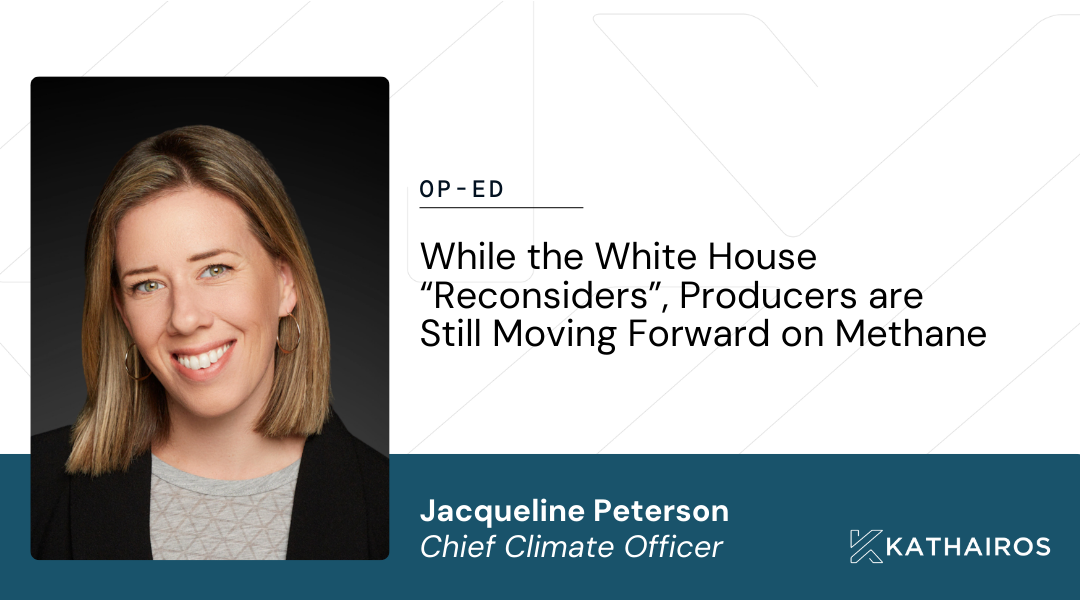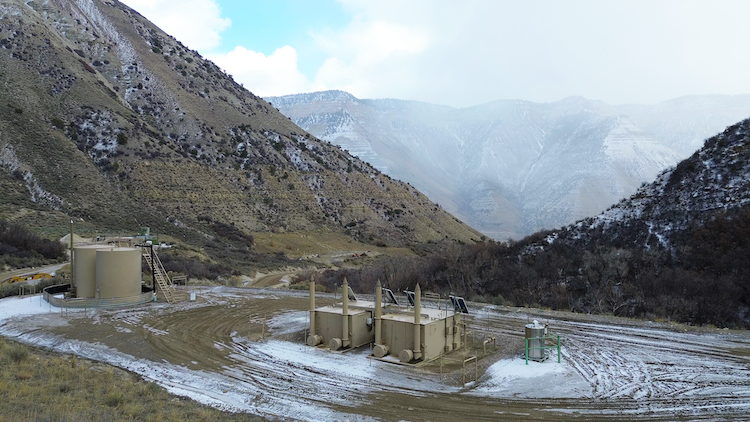
Kathairos has emerged as the leading North American solution for methane elimination from pneumatics, with more than 1,000 systems in operation across North America and over 40 major oil and gas producer partners.
In this post
The good news? The passing of the Democrats’ long-sought tax and energy bill in the Senate is a major step forward in the United States’ efforts to meaningfully tackle greenhouse gas emissions. The bad news? The bill doesn’t limit fugitive methane from oil and gas production.
While the breakthrough legislation would levy fees on producers that fail to plug leaks in drilling operations and pipelines, there’s a dangerous loophole for producers to exploit: any methane leaking from operations that otherwise comply with pending regulations from the Environmental Protection Agency are exempt, meaning that there will still be enormous volumes of fugitive methane released into the atmosphere.
Needless to say: this is a problem.
Methane: The atmospheric blowtorch
Fugitive emissions are gases released inadvertently during the drilling, extraction and transportation of natural gas. In the case of methane, this is especially significant given that it should require the most stringent restrictions. Methane is a particularly potent greenhouse gas, with every molecule of methane being 84x as destructive to the climate as one of carbon dioxide over a 20-year period.
While carbon dioxide is far more durable and will linger in the atmosphere for at least 300 years compared to methane (which breaks down in just 12 years), methane’s potency will allow it to act like a blowtorch on the atmosphere. Because of this, stopping methane leaks and flares from oil and gas fields would yield a considerable, significant and immediate effect.
Properly addressing fugitive methane emissions could, over the next half decade, keep the United States fully on track to meet its pledge to cut emissions in half by 2030, make a big difference in the short-term climate crisis, and buy time for further action.
Further, limiting oil and gas methane emissions has long been swept to the side due to poor measurement, as the United States has been relatively unsuccessful in quantifying the size, as well as measuring the impact, of methane leaks. The EPA simply accepts oil and gas company reports on their own methane leaks, and according to these, total emissions amount to only 8.5 million tons. This is a problem, given that independent estimates always range from 80% higher to double these official figures.
A problem for today
One thing’s certain: methane’s impact is greatest now, just as the climate crisis is hitting hardest. According to the EPA, the volume of leaking methane combined with its powerful warming effects over the next decade demonstrate that fugitive methane creates six times as much climate disruption, equivalent to more than 1,200 tons of CO2, or 20% of all greenhouse gases emissions in the United States.
The good news? It’s relatively easy to make small changes to limit methane emissions from oil and gas operations significantly. In fact, many producers release 90% less than their competitors, and nearly half of current fugitive methane can be captured and sold as pipeline gas at no net cost. More than 75% could be captured at nominal cost. In addition, the pneumatic controller, one piece of oil patch equipment, accounts for 61% of the reported methane leakage, even though zero-emission controllers exist and are required in several states.
The bad news? While preventing fugitive methane costs little money, it does take time. And the industry is averse to spending that time, whether in building a pipeline for collecting the gas or laying power lines to use cleaner electric drilling kits. It doesn’t help that states often feed into this aversion.
For instance, the Texas Railroad Commission in the Texas Permian Basin takes a lax approach to limiting methane. Compared to New Mexico, where the industry is better regulated, the Permian releases only a third as much climate pollution from oil and gas production. Closing methane leaks from the Texas Permian, by itself, would cut short-term climate pollution in the United States by nearly 10%.
National regulation is needed, and President Joe Biden has fought hard for it. That said, the EPA’s current proposal has clear problems: depleted wells that no longer produce significant oil would be exempt from monitoring, even though they cumulatively may leak half of total oil field methane in the United States. Even worse, the rules allow oil producers to vent or flare any amount of gas from wells that lack access to pipelines.
To combat the ever growing climate crisis, the EPA needs to establish rules comprehensive enough to reduce oil and gas methane leaks by 75% within the next half decade. To do this, both flaring and venting need to be completely banned or more strongly regulated; all gas from oil wells should be captured; and wells that no longer produce much oil or gas should be decommissioned properly.
By curbing methane leaks from oil and gas, the Biden administration could, in the next five years, slash the energy sector’s climate footprint by as much as 15%. That could mean fewer floods, forest fires, hurricanes and heat waves from coast to coast, not in 2100, but over the next two decades.
Methane pollution needs more regulation, and fast.
Explore more posts from Kathairos
.jpg)
Decarb Digest, Issue 01: Discover Why Energy Leaders Aren’t Waiting on Washington

Op-Ed: While the White House “reconsiders”, producers are still moving forward on methane

